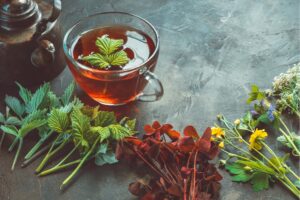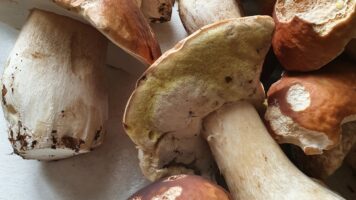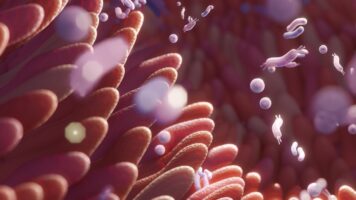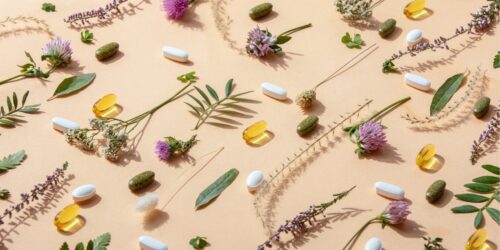It has been described certain antihistamines which block the Diamine Oxyadase (DAO) enzyme. In this sense, the symptoms of DAO deficiency could be worse after taking this medication and, for this reason, there is great interest in finding natural substances which act as antihistamines and do not inhibit the enzyme.
Antihistamines are a class of drugs that act to treat histamine-mediated conditions. Whose objective is to block this amine and, therefore, prevent it from binding to its target receptor and triggering the onset of symptoms. These drugs can be classified into H-1 and H-2 categories, depending on the histamine receptor they act on. On the one hand, H-1 antihistamines are mainly used to treat symptoms related to allergic processes. On the other hand, H-2 antihistamines can reduce excess stomach acid and, therefore, they can be indicated in cases of reflux, gastritis and gastrointestinal ulcers.
When there is a DAO deficiency, histamine cannot be metabolized correctly and, for this reason, there is a tendency to think that the use of antihistamines could improve the situation. However, certain antihistamines which block the DAO enzyme have been described; for example, those containing diphenhydramine, cimetidine or promethazine as active ingredient. In this sense, the symptoms triggered by DAO deficiency could be worse after taking this medication. For this reason, there is great interest in finding substances that act as natural antihistamines without blocking the enzyme. Some substances that we usually recommend from AD Dietistas are:
 – Quercitin: It is a flavonoid compound that is widely distributed in many fruits, vegetables and plants, such as apples, grapes, broccoli, peppers, red onions and green tea, among others. However, in order to benefit from its antihistamine properties, it is necessary to take it at higher doses through supplements.
– Quercitin: It is a flavonoid compound that is widely distributed in many fruits, vegetables and plants, such as apples, grapes, broccoli, peppers, red onions and green tea, among others. However, in order to benefit from its antihistamine properties, it is necessary to take it at higher doses through supplements.
– Luteolin: is found in vegetables such as celery, bell peppers, carrots, onions and broccoli, as well as in plants such as dyer’s rocket, chrysanthemum flowers, parsley, mint, oregano, thyme and perilla. In this sense, herbal teas of these plants can be prepared to take advantage of their benefits. We can find supplements exclusively of luteolin or also of luteolin with quercetin, to provide the body with greater amounts of substances with antihistamine action.
– Agaricus blazei murill: It is one of the best known and studied medicinal mushrooms. It stands out for its high content of polysaccharides and minerals such as zinc, one of the cofactors of the DAO enzyme. It plays a relevant role in immunology, especially with allergies, and is also used as an adjuvant in conventional cancer treatments. It should be noted that it can be consumed including the mushroom in the diet; however, it is not the preferred mode of consumption for functional purposes, since the therapeutic effect is achieved at high concentrations, as occurs with the extract.
– Vitamin C: is present in many low-histamine fruits and vegetables, including blackcurrants, grapes, raspberries, red peppers, broccoli, watercress, parsley, among others. To achieve the daily recommendations for vitamin C, two or three pieces of fruit are usually enough; however, if we want to ensure and enhance its antioxidant, anti-inflammatory and antihistamine properties, it will be necessary to take it through supplementation; but always in a controlled approach!
– Ginger: As a powerful anti-inflammatory, ginger has the ability to reduce the release of endogenous histamine, a mechanism that occurs in allergies. It has also been used in traditional medicine to treat migraine. And, how can it be used in culinary techniques? Well, an easy and simple way is to add a little ginger powder, grated or cut into slices in the herbal teas. Another option to incorporate it is in vegetable soups or creams, in stews or even in pastries.
If you want us to advise you in a personalized way, either in our Barcelona nutrition centre or by video conference from anywhere in the world, contact us and we will help you
Anyhow, in acute and clinically more severe cases or when a large part of the ingested histamine cannot be eliminated even by following a low-histamine diet, the use of antihistamines (H1 of second or third generation) in the short term. However, our recommendation to reduce symptoms is to follow a well-regulated low-histamine diet, accompanied by the DAO enzyme and, if it is needed, start taking a natural antihistamine. Thus, the guideline to follow must be personalized according to each case and, for this reason, it is necessary to visit a registered dietitian-nutritionist specialized in DAO deficiency.
Bibliography
Hetland G, Tangen JM, Mahmood F, Mirlashari MR, Nissen-Meyer LSH, Nentwich I, Therkelsen SP, Tjønnfjord GE, Johnson E. Antitumor, Anti-Inflammatory and Antiallergic Effects of Agaricus blazei Mushroom Extract and the Related Medicinal Basidiomycetes Mushrooms, Hericium erinaceus and Grifolafrondosa: A Review of Preclinical and Clinical Studies. Nutrients. 2020 May 8;12(5):1339. doi: 10.3390/nu12051339. PMID: 32397163; PMCID: PMC7285126.
Jafarinia M, Sadat Hosseini M, Kasiri N, Fazel N, Fathi F, Ganjalikhani Hakemi M, Eskandari N. Quercetin with the potential effect on allergic diseases. Allergy Asthma Clin Immunol. 2020 May 14;16:36. doi: 10.1186/s13223-020-00434-0. PMID: 32467711; PMCID: PMC7227109.
Gendrisch F, Esser PR, Schempp CM, Wölfle U. Luteolin as a modulator of skin aging and inflammation. Biofactors. 2021 Mar;47(2):170-180. doi: 10.1002/biof.1699. Epub 2020 Dec 25. PMID: 33368702.
Poles J, Karhu E, McGill M, McDaniel HR, Lewis JE. The effects of twenty-four nutrients and phytonutrients on immune system function and inflammation: A narrative review. J Clin Transl Res. 2021 May 27;7(3):333-376. PMID: 34239993; PMCID: PMC8259612.
Hrubisko M, Danis R, Huorka M, Wawruch M. Histamine Intolerance-The More We Know the Less We Know. A Review. Nutrients. 2021 Jun 29;13(7):2228. doi: 10.3390/nu13072228. PMID: 34209583; PMCID: PMC8308327.
Ibrahim SSA, El-Aal SAA, Reda AM, Achy SE, Shahine Y. Anti-neoplastic action of Cimetidine/Vitamin C on histamine and the PI3K/AKT/mTOR pathway in Ehrlich breast cancer. Sci Rep. 2022 Jul 7;12(1):11514. doi: 10.1038/s41598-022-15551-6. PMID: 35798765; PMCID: PMC9262990.
Farzam K, Sabir S, O’Rourke MC. Antihistamines. 2022 Jul 15. In: StatPearls [Internet]. Treasure Island (FL): StatPearls Publishing; 2022 Jan–. PMID: 30844215.







Great article
Thanks
Thank you Bern!